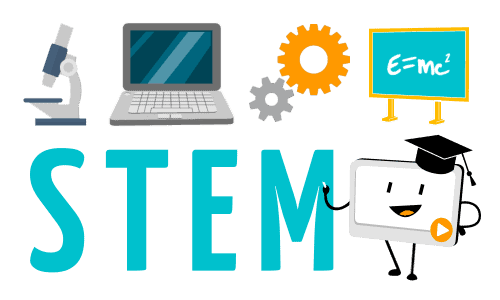STEM – Education’s Rising Focus
STEM is on the rise.
For a number of years, STEM has become a very relevant focus topic in school education. STEM is an acronym for the academic disciplines of Science, Technology, Engineering, and Mathematics. It is a term used to address education policies for the improvement of science and technology development in schools.
But what’s the big deal? Why is STEM relevant?
STEM shapes our everyday experiences. That is precisely why STEM is important – it’s everywhere! And…the future depends on it.
STEM is relevant because it has significant career implications, for now and for the future. In fact, according to the U.S. Department of Labor (2009), eight out of the ten most wanted employees were ones with degrees in STEM fields. Currently, STEM occupations are growing at 17%, while others are growing at 9.8%. In addition, the 10 fastest growing occupations in the U.S. are STEM careers. These careers are involved in helping to build communities and transform nations. STEM professionals solve the complex problems of today’s world. But more importantly, they strive to solve the problems of the future! They work to alleviate poverty and hunger, try to find solutions for global warming as well as cures for cancer, just to mention a few.
Science, Technology, Engineering, and Mathematics
Due to the great necessity for professionals in the areas of Science, Technology, Engineering, and Mathematics, U.S. authorities devised an action plan some 10 years ago. The aim was to increase the U.S. employee talent pool by improving education in science and mathematics. STEM was the result.
What great foresight! Today, STEM education in schools often involves students learning through hands-on experimentation, design, and trial and error. Activities may include building space rockets made of cardboard or dollhouses with working electricity. In addition, STEM education often uses new technologies such as 3D printers to encourage interest in STEM fields.
Interest is also created by developing programs that use STEM areas to make a greater connection to the real world. Such programs provide authentic purposes for learning and solving problems. Local communities and businesses can be involved. For example, students shadow engineers, work in local hospitals, and participate in internships. Working scientists may visit classrooms, helping students design experiments.
However, the STEM approach is not necessarily always viewed in a positive light. Some perceive STEM as window dressing. Others disagree and believe that we have, finally, found the right way to get kids interested in math and science .
Views on STEM
Those who label STEM as window dressing warn that, to dress up maths, science, technology and engineering as all fun and games, may have a negative outcome in the long run: if students lack even basic math and science skills they won’t see STEM-related jobs as realistic options for future careers. Some even view STEM programs as elitist. Able students get opportunities through STEM programs and consequently benefit from the experience. But what about less able students? There is a need for focusing on helping all students to first develop the mathematical, scientific, and technological knowledge they will need to optimally benefit from STEM. The fun is great, but the basics must not be forgotten! So, excessive emphasis on STEM creates the risk of too many students not receiving solid instruction in math and the sciences. These critics believe that STEM is just another fad and that teaching to the standards, using proven instructional practices, will prepare students far better.
STEM-show?
Perhaps the best approach is STEM programs plus a focus on the basics! This is precisely where mysimpleshow contributes fabulously. Teachers can create and make use of educational videos to teach the basics in a simple yet effective manner. In addition, mysimpleshow could also be used to involve students in the making of explainer videos to present STEM ideas and concepts, or to promote their own STEM creations, designs and inventions.
This is one way of encouraging students to understand and embrace STEM, the disciplines that affect them every day of their lives, and will continue to do so for generations to come!






